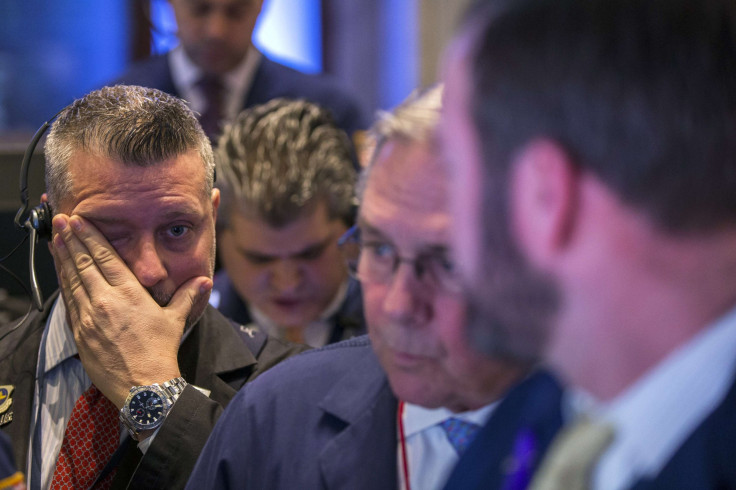Dow Jones Industrial Average, S&P 500 Index Fall After Jobless Claims Rise By Most Since December 2013

U.S. stocks fell in early trading Thursday, a day after the blue-chip Dow Jones Industrial Average closed at a record high, as investors weighed a trio of weaker-than-expected data points that painted a mixed picture of the overall health of the American economy. The consumer price index, a key measure the U.S. Federal Reserve uses to gauge inflation, posted its largest drop since 2008, weighed down by the precipitous drop in gasoline prices.
Meanwhile, the number of Americans filing new claims for unemployment benefits last week jumped by the most since December 2013, while a key indicator of business investment advanced last month following three straight months of decline.
The Dow, measuring the share prices of 30 large industrial companies, dipped 24.21 points, or 0.13 percent, to 18,200.36. The S&P 500 stock index dropped 5.90 points, or 0.28 percent, to 2,107.55. And the Nasdaq Composite fell 9.11 points, or 0.17 percent, to 4,959.09.
Consumer Price Index
The CPI -- measuring the average prices of consumer goods and services such as for transportation, medical care and food -- declined 0.7 percent last month, the U.S. Bureau of Labor Statistics said Thursday. Economists had forecast a decrease of 0.6 percent, according to analysts polled by Thomson Reuters. However, core CPI, excluding the volatile categories of food and energy prices, advanced 0.2 percent.
Although the drop gives Federal Reserve officials’ room to pause as they debate whether to hike interest rates this year, some economists still forecast a rate hike in mid-2015. “Today’s news isn’t going to affect the timing of the Fed’s first rate hike. Fed officials have stressed that they expect this dip into deflation to be brief, and they are more focused on where the inflation rate will be in two years’ time, not where it is now. We still expect the first rate hike in June,” Paul Ashworth, chief North American economist at Capital Economics, said in a research note Thursday.
Weekly Jobless Claims
Weekly jobless claims, representing the number of Americans filing new claims for unemployment insurance, rose by the most in six weeks, climbing 31,000 last week to a seasonally adjusted 313,000, the U.S. Labor Department said Thursday. Economists had expected initial claims for unemployment benefits to increase by 7,000, to 290,000, for the week ended Feb. 21, according to Reuters. The jump in jobless claims paints a mixed picture of the health of the U.S. labor market, with data in the same series two weeks earlier showing such claims fell to their lowest level since April 2000.
Durable Goods Orders
Separately, durable-goods orders increased 2.8 percent in January, more than what economists had expected in the wake of a revised 3.7 percent decrease in December, the Commerce Department said Thursday. Economists use durable-goods orders as a key indicator for growth of the U.S. economy that measures the movement of big-ticket items, such as automobiles and kitchen appliances designed to last at least three years.
Nondefense capital-goods orders excluding aircraft, a closely watched measure used to assess plans for business investment, rose 0.6 percent in January, after falling a revised 0.7 percent in December. The rebound signaled demand by U.S. multinational companies picked up last month following three straight months of decline.
The subdued momentum of durable-goods orders has been blurred by volatility in aircrafts. Although durable-goods orders continue to move forward, the pace has slowed since last fall. “Our favored business-investment gauge points to moderate activity in early 2015 as a stronger dollar and sluggish global growth restrain activity. However, we see strong domestic fundamentals and expect activity to accelerate once international headwinds dissipate,” Gregory Daco, head of U.S. macroeconomics at Oxford Economics, said in a research note Thursday.
© Copyright IBTimes 2024. All rights reserved.












